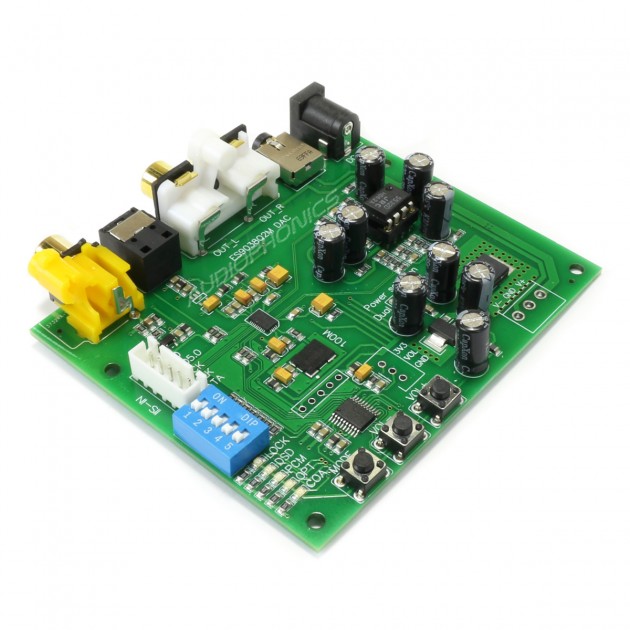An optical balanced receiver is designed specifically to support complex and challenging applications. Those applications are focused where high signal-to-noise functioning is vital. The best example of such an application is optical coherence tomography. The tomography acquires the lowest noise performance of pin balanced receiver module of wavelength ranging from 400nm to 1600nm. The optical balanced receiver is compact-designed and features a single supply voltage for OEM applications and adjusts the wavelength bandwidth continuously.
Powerful balanced detectors
Balanced receivers comprise anti-parallel photodiodes. It is used extensively incoherent receiver modules based on its potential to reduce laser relative intensity noise or RIN, along with ASE or amplified spontaneous emission noise from fiber amplifiers. This allows the analog links to accomplish shot noise-restricted performance at high optical powers. This helps to enhance the link gain, a noise figure, and counterfeit-free dynamic range.
To enjoy such benefits, it is necessary to have balanced photodetectors that consist of high saturation photocurrents. The optimal performance can be experienced when both channels of pin balanced receiver module sync perfectly optically and electrically. Furthermore, it is advantageous to integrate the components of receiver elements uniformly, especially the two photodiodes.
Detecting ultra-low level signals
The balanced optical receiver module features multiple photodiodes that render optimal application functioning, and low noise, highly transmitting amplifier. This offers an excellent solution to identify even the smallest modifications to the infringing noise of an incoming signal. The biggest advantage is that the common optical noise is eliminated.
The PIN balanced receiver module includes dual low-noise photodiodes with synced responsivity to assure the highest CMRR or Common Mode Rejection Ratio. The balanced receiver module features electric supply inputs, fiber inputs, and photocurrent monitor outputs. The receiver modules are designed to withstand myriad ranges of temperature and harsh weather environments.
Applications
Spectroscopy
The balanced receiver module is considered for measuring weak absorption in spectroscopy. Two photodetectors are used, where one is used for transmitted light through a sample of spectroscopy. The second photodetector is used lighted up from the same source, but without going through the spectroscopic sample. The dual light beams are acquired between the spectroscopic sample and the source of light through a beam splitter. The intensity noise in the used light sources gets eliminated because of the balanced detection feature, thereby enabling the measurement with an enhanced signal-to-noise ratio.
Detecting homodyne
In several cases, balanced photodetectors are used following a 50:50 beam light splitter for measuring laser intensity noise. The presence of suitable electronic circuits delivers the sum and the differences of feeds and photocurrents to the electronic spectrum detector. The sum signal reflects intensity noise similar to a single photodetector. On the other hand, the difference signal highlights the shot noise level. Henceforth, there can be an easy comparison between the laser noise level and the shot noise level.
Detecting interferometers
With the use of different interferometers, the noise detection and noise performance can be improved to a great extent. The greatest example is optical coherence tomography. The dual balanced photodetectors receive light from dual-beam splitter outputs, where the signal beam is highly stratified with the reference beam. It is the differences in the photocurrents that deliver the desired interferometric signal while oppressing the light source’s intensity noise. A similar technique is utilized in detecting optical heterodyne and several other applications, like ellipsometry, optical delay measurement, and so on.
Highlighting features
The balanced receiver module highlights the following key features:
- The spectral range from 800nm to 1650nm
- Compliance with RoHS
- High-performance photodiode
- A bandwidth of a minimum of 200 MHz
- Featuring matching responsivity
- Robustness and ruggedness
- The presence of photo-current monitor outputs
The above-mentioned features of a balanced receiver module make it widely utilized in several applications.
Conclusion
The noise cancellation or elimination that gets detected is known as common-mode rejection and is measured in decibels. The noise cancellation can be achieved at least 50 dB or sometimes even more. A pin balanced receiver module setup is assembled using single components but can be beneficial to utilize a prefabricated assembly with matched photodiodes and the demanded electronics. The balanced receiver module is useful in multiple applications, in industrial and technological sectors, for detecting the smallest differences in optical power between two optical input signals.
